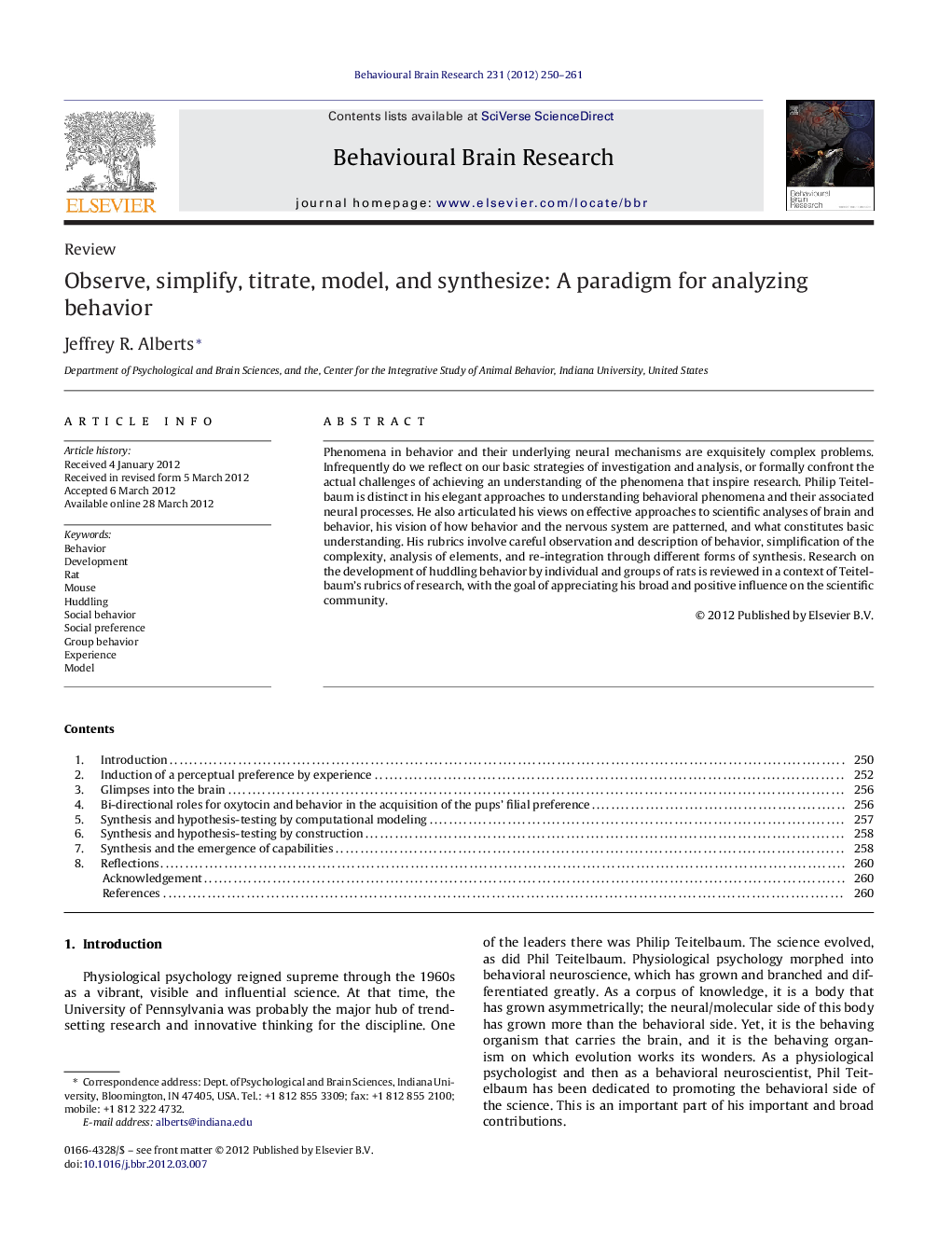| کد مقاله | کد نشریه | سال انتشار | مقاله انگلیسی | نسخه تمام متن |
|---|---|---|---|---|
| 4313066 | 1289984 | 2012 | 12 صفحه PDF | دانلود رایگان |

Phenomena in behavior and their underlying neural mechanisms are exquisitely complex problems. Infrequently do we reflect on our basic strategies of investigation and analysis, or formally confront the actual challenges of achieving an understanding of the phenomena that inspire research. Philip Teitelbaum is distinct in his elegant approaches to understanding behavioral phenomena and their associated neural processes. He also articulated his views on effective approaches to scientific analyses of brain and behavior, his vision of how behavior and the nervous system are patterned, and what constitutes basic understanding. His rubrics involve careful observation and description of behavior, simplification of the complexity, analysis of elements, and re-integration through different forms of synthesis. Research on the development of huddling behavior by individual and groups of rats is reviewed in a context of Teitelbaum's rubrics of research, with the goal of appreciating his broad and positive influence on the scientific community.
► Huddling behavior can be simplified into its sensory controls which change during development.
► Certain sensory cues from huddling selectively induce filial preferences for associated cues.
► Oxytocin in pups is needed to form filial preferences and augments the behaviors that release it.
► Huddling is a complex group behavior that emerges from simple individual interactions.
► Huddling by rat pups is synthesized with experiments and models that fit Teitelbaum's rubrics.
Journal: Behavioural Brain Research - Volume 231, Issue 2, 1 June 2012, Pages 250–261